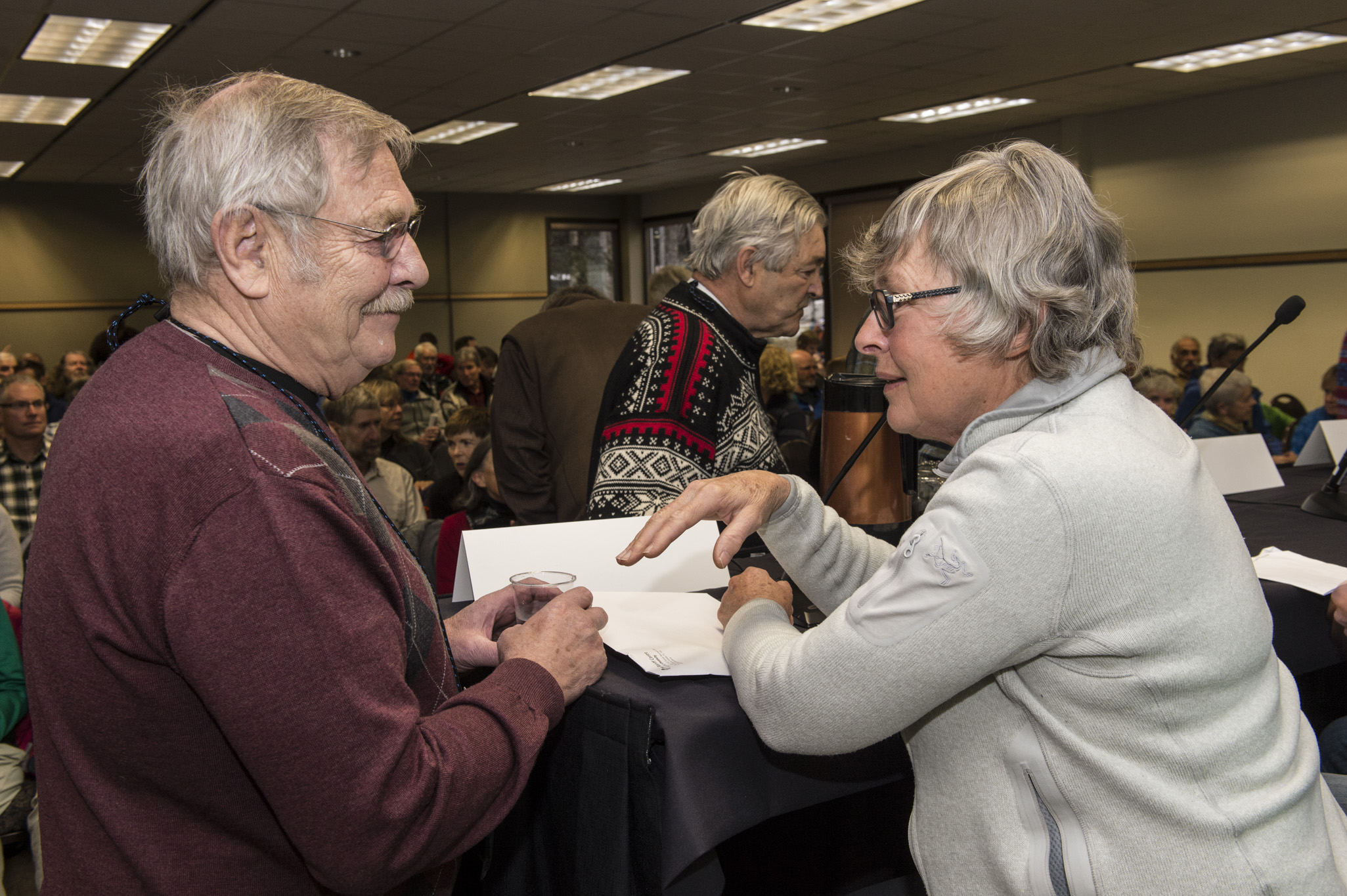Five Mountain Storytellers Share Their Yarn-Spinning Secrets

Mountains inspire stories. Perhaps it’s the unique mixture of adventure, isolation and exploration. Or perhaps it’s just the types of people who seek out a life in the wilderness. Either way, the ability to spin a good yarn seems as important a part of the lifestyle as a good pair of boots and a warm jacket.
Some of the finest old-school storytellers in the Canadian Rockies shared a few their tales with audiences at the 40th Banff Mountain Film and Book Festival this year. Afterwards, they told us what they think makes a story worth telling.
Barb Renner - Catheters and cougar milk
“I called the hospital and said ‘I need a catheter... One size fits all, right?’”
Having run the Assiniboine Lodge with her husband for more than 30 years, Barb Renner has more than a few stories to tell. She shared with the audience a story about having to play nurse for one stubborn guest who refused to leave the lodge to have a catheter put in, forcing her and another guest to do it for him. As well, she reminisced on meetings between mountain guides — the stories they used to swap and the rum-spiked Cougar’s Milk drink they whipped up.
Barb Renner on good storytelling:
“[You need] a sense of humour, to begin with. Also, if you can involve your audience with something humourous, you can draw people in with it. There’s always something to laugh at, no matter how bad things are. Even in the wilderness.”
Andrew Brash - Life and death on the Himalayas
“I said ‘I really hope this guy makes it.’ Lincoln kind of perked up and said ‘Yeah, so do I.’”
Brash also passed along a hard lesson that he had to learn from experience: the importance of keeping one’s water bottle separate from their urine bottle while spending a night in a dark tent.
Andrew Brash on good storytelling:
“I think a good story has to include something about feelings and emotions. And it has to be moving, somehow. Emotionally moving. That's what makes a good story for me.”
Leanne Allison - Letting sleeping bears lie
“So, we had to get in the boat and paddled right by this polar bear.”
The Canmore adventure filmmaker has a wealth of stories to share from her journeys — the most recent of which come from a cross-country family trip to follow the works of Farley Mowat. She recounted time spent night sailing off the East coast in a boat made by a Nova Scotia sailor. As well a tense moment where she, along with her husband and young son, were forced to sneak past a sleeping polar bear while canoeing near Hudson’s Bay.
Leanne Allison on good storytelling:
“I think, obviously, people can't get away from the fact that a good story needs a beginning, middle and end. Can't get away from that. But, I guess a story that moves people, ideally. A story that makes you see the world in a different way. Those are the best stories to me.”
Roy Anderson - On finding paradise
“I’m sure there were diamonds in the shadows … beautiful, I will never forget. My paradise.”
Few people know Banff as well as Roy Anderson. The photographer has decades worth of stories about the area and the people living in it. But one of the most vivid comes from 1961, when he was working with a group of other young men at Norquay. On a whim, they decided to hop a bus to take them down the highway and up a narrow switchback to Sunshine Village — giving Anderson his first glimpse at a place he calls “my Shangri-La.”
Roy Anderson on good storytelling:
“Oh lord, that's a tough question. I guess, to me, what makes a good story is the adventure, the experience. One that lies in exploring the backcountry, the unknown. The mountain, the forests, the deserts, what have you.”
Patsy Murphy - How to start a film festival
“Betty and I remember rolling our eyes at the thought. It sounded like a very big project.”
Patsy Murphy is a name well-known to regulars at the festival — she was one of the original minds behind its creation four decades ago. Murphy talked about the history of the festival and its humble start as a handful of films put on by a small group of volunteers; as well as the struggles of putting on a touring show at a time when movies still came on massive metal reels.
Patsy Murphy on good storytelling:
“Something that comes from the heart, or it's about personal accounts and perhaps even family-orientated. Something that incorporates your feelings, the true feelings of people and events."